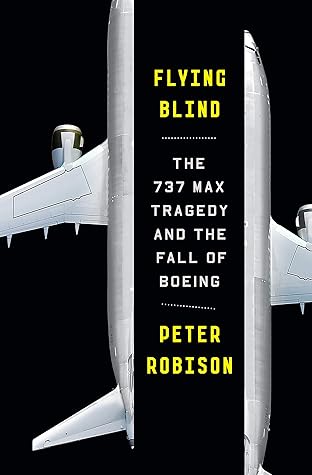More on this book
Community
Kindle Notes & Highlights
Read between
January 20 - January 25, 2023
“This airplane is designed by clowns, who in turn are supervised by monkeys.”
Barack Obama, who stood beside Lion Air’s CEO in Bali when it signed a $22 billion order for MAX planes, once said he deserved a gold watch from Boeing.
A federal mediator who refereed a strike by Boeing engineers two years later described the merger privately as “hunter killer assassins” meeting Boy Scouts.
they executed what today might be called the standard corporate playbook: anti-union, regulation-light, outsourcing-heavy. But pro-handout, at least when it comes to tax breaks and lucrative government contracts.
By 1928, almost one-third of U.S. airmail was carried by Boeing Air Transport,
“When something goes wrong with an airplane, what should an engineer do? Send out public relations? The lawyers? Or the engineers?” Schairer said. “It’s easy for the bean counters to call out the lawyers—and the lawyers will say, ‘There was nothing wrong with our airplane—it was pilot error.’ A manufacturer can go on for years this way. Wells wouldn’t put up with that.”
“We believe the airplane is trying to tell us something.”
But the money isn’t free. When companies buy back shares, they’re forgoing other spending, like investments in their next line of products or pension contributions. McDonnell Douglas ramped up buybacks over the next two years; simultaneously, it cut its R&D spending 60 percent.
it was precisely the kind of messy corporate structure that Joe Sutter had discovered at NASA a decade prior in the wake of the Challenger disaster—the sort that, he had declared with so much confidence, would never come to Boeing.
It was the largest white-collar strike in U.S. history, encompassing twenty-three thousand workers in six states.
“There’s one thing that made Boeing really great all the way along. They always understood that they were an engineering-driven company, not a financially driven company. If they’re no longer honoring that as their central mission, then over time they’ll just become another company.”
The analysis found the airplane unit accounted for less than three dollars of the value in the stock, then trading at thirty-five dollars.
From 1981 to 1983, he calculated, buybacks consumed only 4 percent of net income for the largest U.S. companies. By 1996, it was 27 percent; by 2006, 46 percent; and by 2016, 50 percent.
In a 2014 article called “The Capitalist’s Dilemma,” Christensen wrote that companies needed more “market-creating” innovations, not “efficiency” innovations, whose benefits lasted only a year or two and cost jobs. “Much as it pains us to say it, a lot of the blame for the capitalist’s dilemma rests with our great schools of business, including our own,” he wrote. “We’ve advanced
success metrics that are at best superficial and at worst harmful.”
Roger Williams, a Texas Republican, asked an FAA official a couple of perfunctory questions. “Would you feel comfortable flying on a Boeing 787?” (Yes, came the answer.) “Do we need to get more involved?” (No.) “Less government is the best government,” he concluded.
“If we emphasize MCAS is a new function there may be a greater certification and training impact,” said a memo that month, summarizing their discussion.
The shift of Dreamliner production to South Carolina had come with its own drawbacks. The state might have been cheap, but the people Boeing hired—at half the hourly wage of those in Seattle—had little experience building airplanes.
reckoning looming ahead, with the wave of new planes coming at the same time as an influx of relatively inexperienced pilots.
Finally, in November 2016, Boeing’s engineers handed over the system safety assessment of the MCAS software to the FAA. The document didn’t include anything about the new angle of the stabilizer, or the software changes made to MCAS in the final “black label” version.
“I think we’ve got something here that goes beyond the crash itself.”
Boeing’s total equity—just like a house, a measure of its debt compared to its assets on hand—stood at $410 million by the end of 2018. It had been $13 billion in 1997, before Stonecipher and his successors started hollowing out the company in the drive to boost the all-important return on net assets.
“This is a story about a company cutting corners, taking short cuts, sacrificing safety to achieve maximum profits.”
the MAX remains the only large commercial airliner without an electronic checklist to guide pilots.


